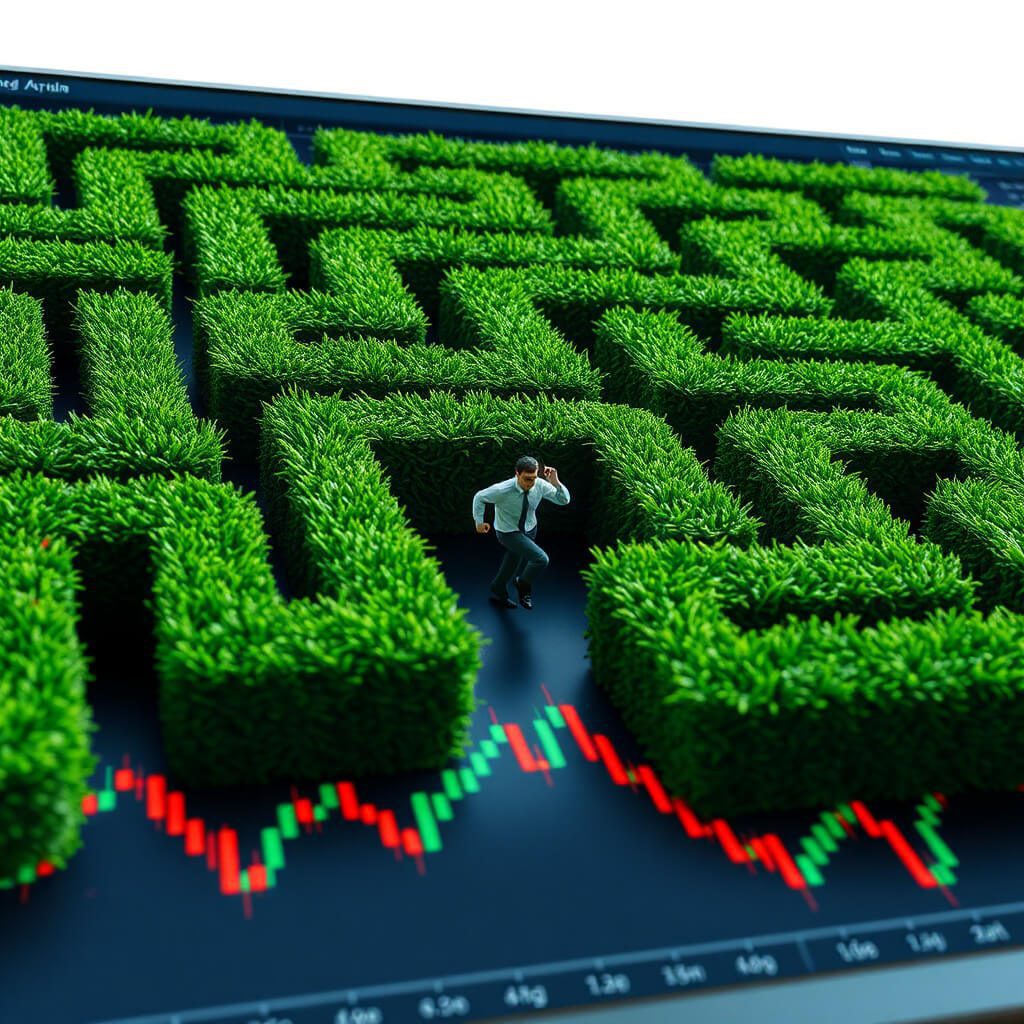When you place a trade, you might think you’re buying or selling directly from another trader. In reality, most of the time, you’re dealing with a market maker—a middleman who ensures liquidity but also profits from every transaction.
Market makers play a crucial role in financial markets, but their business model is designed to make money off traders, often in ways that aren’t obvious. If you’re not aware of how they operate, you could be leaving money on the table every time you execute a trade.
In this guide, we’ll break down:
- Who market makers are
- How they profit from your trades
- The impact of payment for order flow (PFOF)
- How to avoid unnecessary costs when trading
What Is a Market Maker?
A market maker is a financial institution that provides liquidity by continuously offering to buy and sell assets at quoted bid and ask prices. They ensure that there’s always a counterparty for your trades, reducing the time it takes to execute an order.
Examples of well-known market makers include Citadel Securities, Virtu Financial, and Jane Street. They operate in stocks, options, forex, and even cryptocurrency markets.
Market makers profit by capturing the spread—the difference between the bid price (what they buy at) and the ask price (what they sell at). Every time a trader buys or sells at market price, the market maker pockets the spread.
How Market Makers Profit From You
Market makers don’t just facilitate trades—they actively extract profits from the trading process in several ways:
Bid-Ask Spread
The spread is the most basic way market makers make money. If a stock’s bid price is $50.00 and the ask price is $50.05, a trader buying at market price pays $50.05, while another selling at market price gets $50.00. That $0.05 difference goes to the market maker.
In highly liquid stocks, the spread is often very small (a few cents), but in illiquid assets, spreads can be much wider, making it more costly for traders to enter and exit positions.
Payment for Order Flow (PFOF)
Many brokers, especially commission-free platforms like Robinhood, sell retail order flow to market makers. This means when you place an order, your trade is routed to a market maker instead of going directly to an exchange.
Market makers pay for this order flow because they can profit from executing your trade at slightly worse prices than you might get elsewhere. While brokers claim this results in “price improvement,” studies have shown that retail traders often get worse execution prices compared to direct exchange trading.
Internalization of Orders
Instead of sending your trade to an open exchange, market makers often internalize orders—meaning they match buys and sells within their own system, never exposing the trade to public markets.
This allows them to control pricing, reducing competition and potentially giving traders worse fills than they would get if their orders were executed in a fully competitive marketplace.
Stop-Hunting and Liquidity Grabs
Market makers can see where stop-loss orders and large pending trades are placed. In some cases, they push the price temporarily past key levels to trigger stop-losses or absorb large orders at favorable prices before reversing the price direction.
For example, if a large number of traders have stop-losses at $49.95, a market maker may briefly drop the price to $49.94, triggering those stops before pushing the price back up.
Are Market Makers Bad for Traders?
Market makers are not inherently bad—they provide liquidity, ensuring traders can enter and exit positions quickly. Without them, price movements would be much more erratic, especially in less liquid markets.
However, their profit-driven model means they will always seek to maximize their own gains, often at the expense of uninformed traders.
The key is understanding how they operate and adjusting your trading strategy accordingly.
How to Avoid Market Maker Traps
While you can’t eliminate the influence of market makers, you can minimize the ways they profit from you:
Use Limit Orders Instead of Market Orders
Market orders guarantee execution but often at a worse price due to the spread. Limit orders let you set the price you’re willing to buy or sell at, reducing unnecessary costs.
Trade During High-Liquidity Hours
Market makers widen spreads and manipulate prices more easily during low-volume periods. Trading when liquidity is highest (regular market hours) can help ensure better fills.
Be Aware of Stop-Loss Placement
Placing stop-losses at obvious levels (like round numbers or recent support/resistance) can make you a target for stop-hunting. Consider using mental stops or placing stops slightly beyond common trigger levels.
Avoid Commission-Free Brokers That Use PFOF
Brokers that sell order flow route your trades in ways that may not be optimal for execution. Using a broker that offers direct market access (DMA) can result in better fills.
Look at Level II Data
Level II market data shows the order book, giving insight into where large buy and sell orders are sitting. This helps identify potential liquidity traps and avoid bad trade entries.
Final Thoughts
Market makers aren’t your enemy, but they aren’t your friend either. They exist to make money, and their profits come directly from traders who don’t understand how they operate.
By using limit orders, avoiding obvious stop-loss placements, and choosing the right brokers, you can reduce the hidden costs market makers impose on your trades.
Trading is already tough—don’t let hidden market forces take an unnecessary cut of your profits.

Leave a Reply